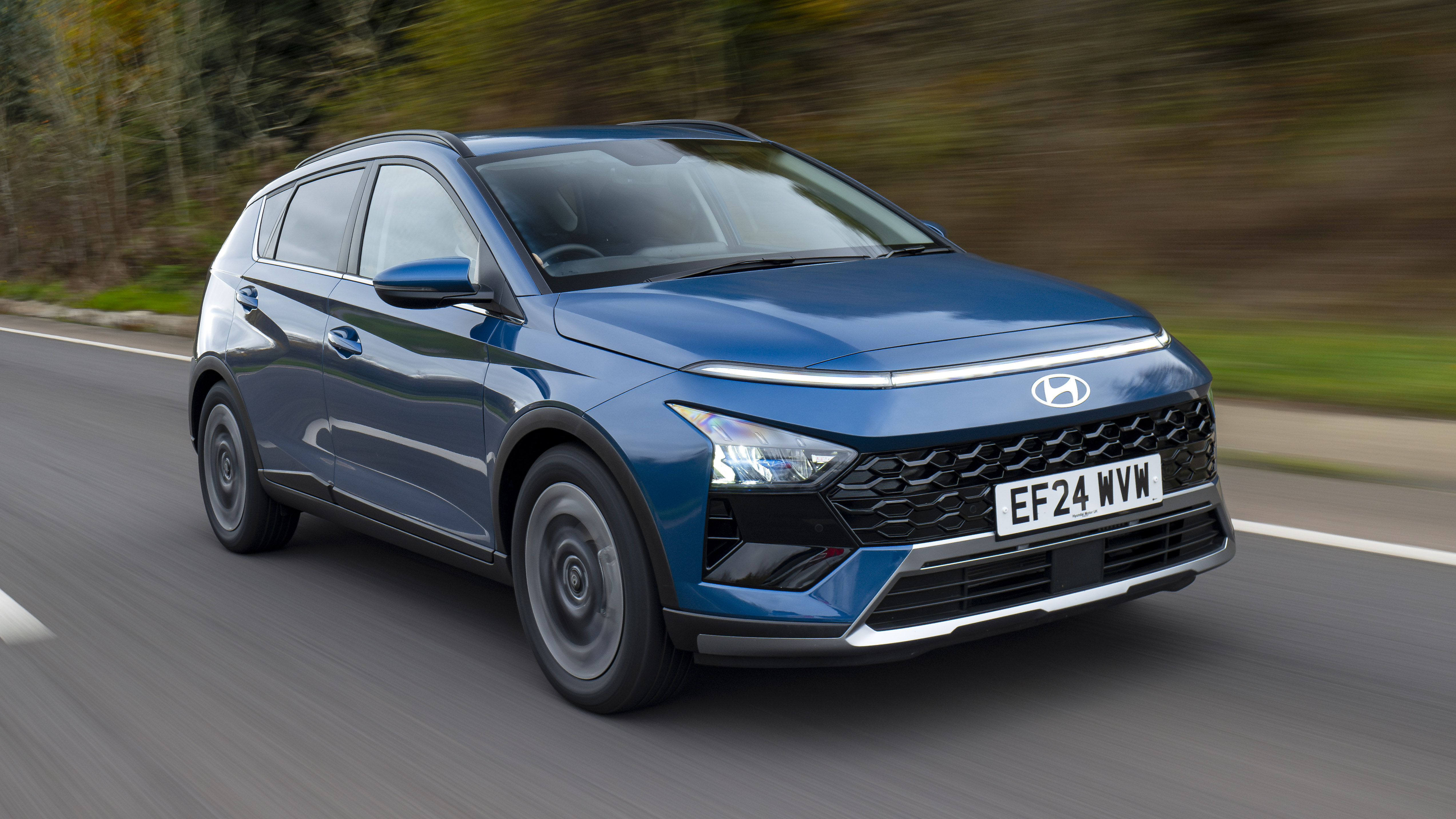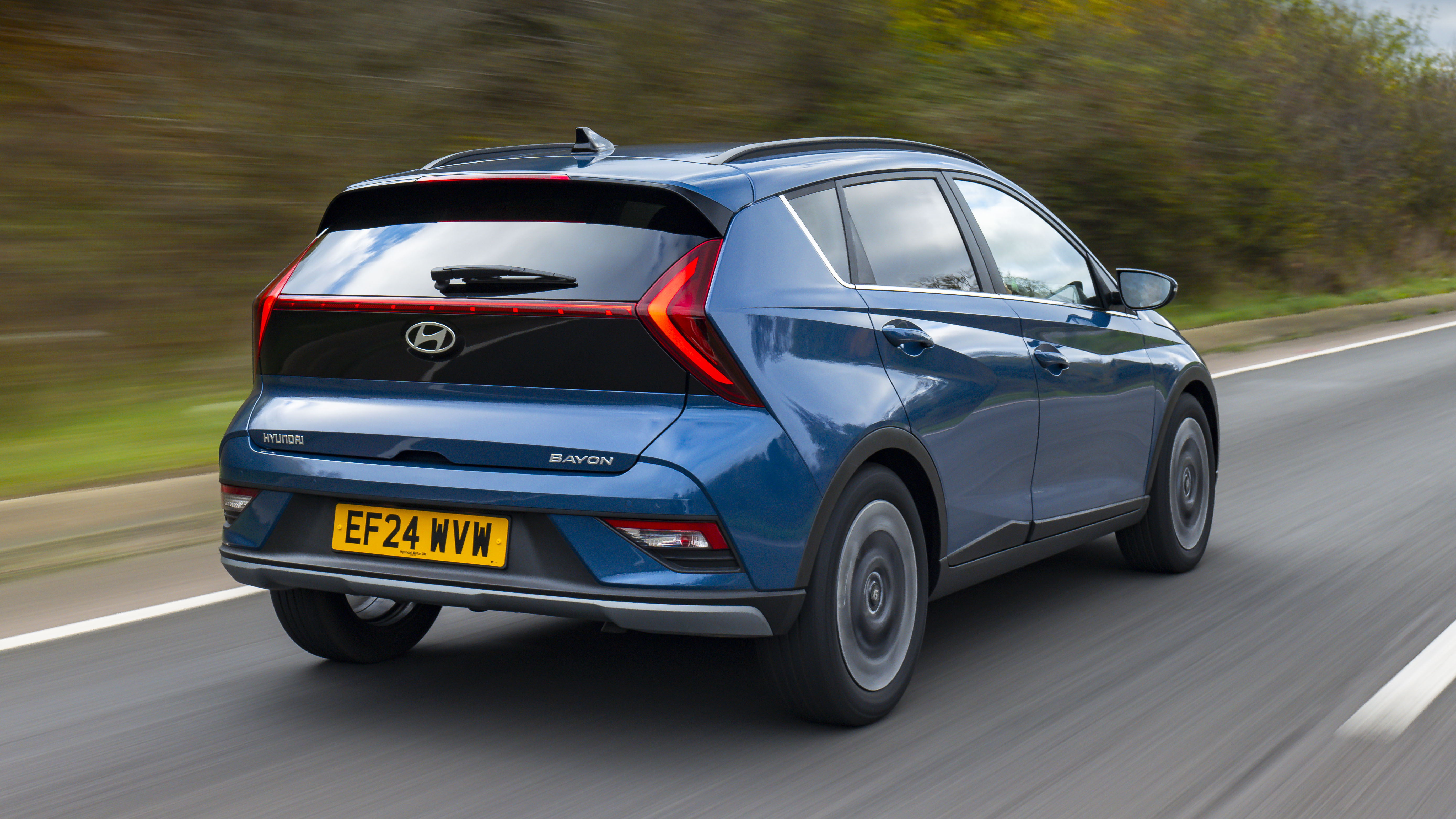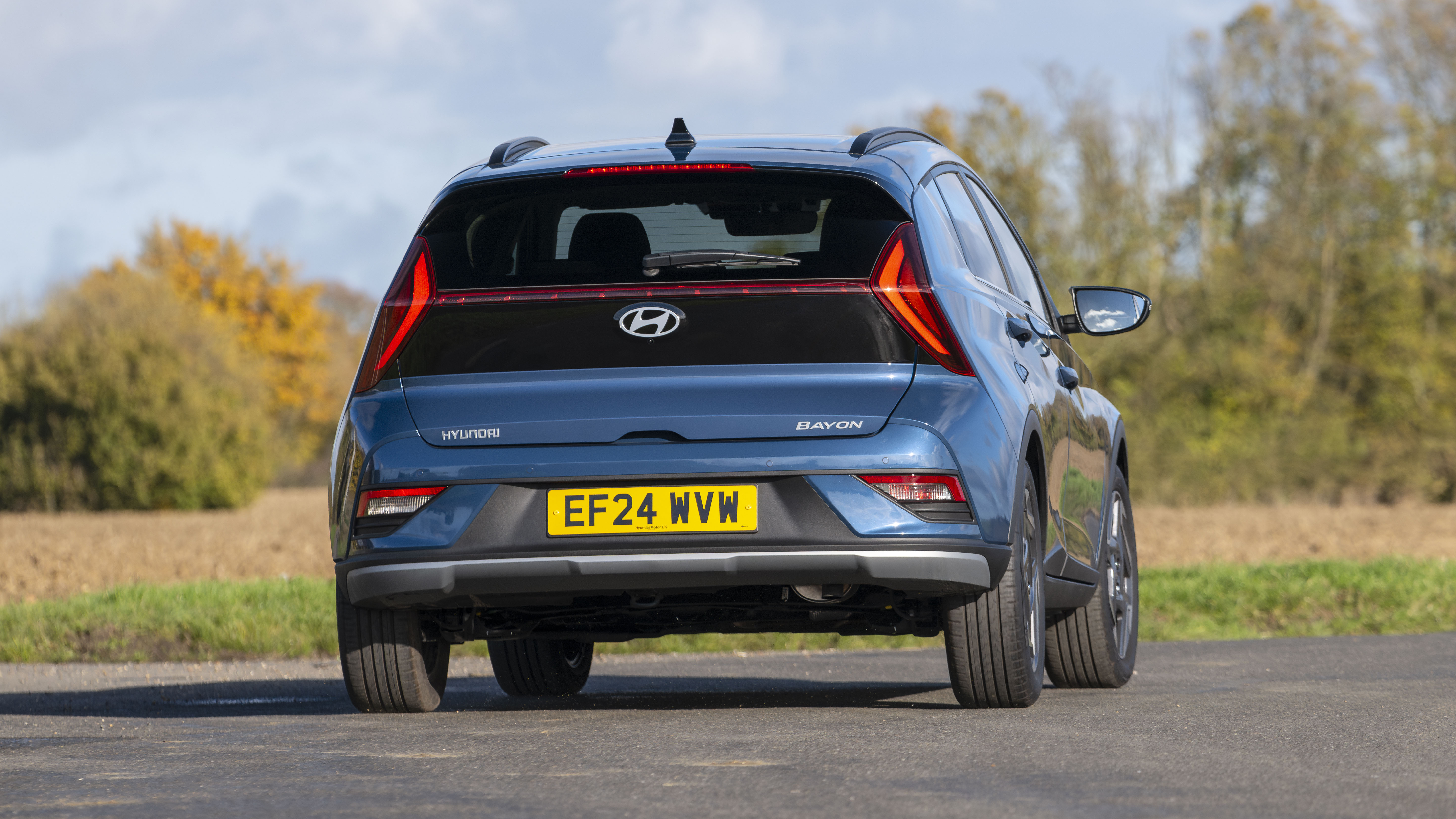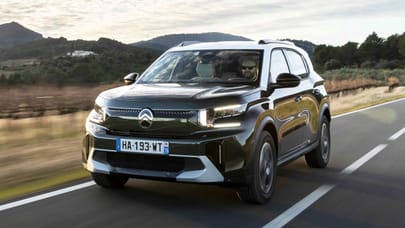
Good stuff
Comfy ride. Doesn’t try to be anything it’s not. All the space, tech and features you’d expect
Bad stuff
And all of the tedium too. No real USP. And it’s not exactly any cheaper than rivals either
Overview
What is it?
Hyundai's smallest crossover (despite what the Korean firm might try and tell you, we'd argue the Inster is a city car), first unveiled back in 2021 and facelifted in 2024. It costs just shy of £23k and is essentially a slightly taller, boxier version of the i20 supermini. A sensible hatchback then, but one that’s easier to get in and out of.
The Korean firm does a decent line in crossovers of course: the latest Kona – the next one up in size and price – still looks the business, the Ioniq 5 is one of the most complete family EVs money can buy, the bigger Tucson looks like a concept car that escaped from the design studio in the middle of the night, and if you want a car that’s almost as roomy and at least as comfy as a Land Rover Discovery for about two thirds the price, we’d recommend checking out the new Santa Fe.
So the Bayon ticks all the boxes you’d expect. It has creasy, grumpy-looking styling and lots of LEDs stuck to either end, while roof rails and those silver bumper sections hint at outdoorsyness, because marketing bods have sussed out that people buy more of them when these things are styled to look like miniature 4x4s.
What changes did the facelift bring?
The usual fare: a new grille, redesigned bumpers including a full length front LED daytime running light crowned by standard fit LED head- and tail-lights, new alloy wheel designs and colours, plus a healthy helping of new safety tech.
Inside, there’s now dual 10.25in instrument cluster and infotainment displays, 64-colour ambient lighting and… not a whole lot else of note, to be honest. Not that it needed much, with the likes of smartphone mirroring and charging already there.
It’ll be all very familiar if you’ve ever seen or driven an i20, with identical screens, climate controls (yep, there’s a dedicated panel), the lot, basically. That means it’s feature-packed and well-screwed together, if a bit shiny-grey in places.
There’s plenty of space, visibility is a strong suit, and there’s lots of driver aids and safety gadgetry on top, particularly as you climb the trim range. It’s a car that ticks a lot of boxes, then, but doesn’t especially try to think outside of one.
Evolution rather than revolution, then?
Yep. Though, where previously you had the choice of two 1.0-litre three-cylinder mild hybrids to choose from, these have been replaced by a sole 1.0-litre turbocharged petrol engine, minus any electrification.
Again, it’s a similar move to that we saw in the refreshed i20, with which it shares its powertrain. At least it makes navigating the configurator easier. Now, you’re looking at a maximum output of 128bhp, with 127lb ft torque when coupled with a six-speed manual, or 147lb ft when mated to the six-speed automatic 'box.
How does it compare to rivals?
Whenever there’s a car in this class that has a USP (Ford Puma: handling, Citroen C3 Aircross: quirkiness, Nissan Juke: homegrown status, Toyota C-HR: hybrid drive and mad looks) they instantly rise above the others.
The Bayon is probably a stronger all-rounder than a Kia Stonic, VW T-Cross, Seat Arona or Renault Captur, but it doesn’t do much besides to really stake a claim to be king of crossovers. We suspect you’ll buy the one that you like the look of the most.
Our choice from the range

What's the verdict?
The Bayon is a painfully worthy, sensible car. Spacious, roomy, mostly easy to operate and inoffensive to drive. It has clearly been benchmarked against a great many successful cars to within an inch of its life, and apart from the angry Pokémon styling, will offend as few people as it’s physically possible for a car to annoy.
Thing is, small crossovers are an intense battleground on planet car. Everyone’s got one. Had to, since the Juke reared its ugly head and promptly became a money-printer for Nissan. They’re cannibalising the sales of ordinary heartland superminis, and having people questioning the sanity of owning a big family sized SUV once the kids have left home, or now they’re working from home more often.
So the Bayon’s only real gripe is that while it does a great many things very well indeed, it doesn’t really do anything exceptionally or memorably. If you simply want safe, easy-going transport that’s fine: this is a well-priced contender that’ll be cheap to run. If you’re looking for driving kicks, there are better options elsewhere.










